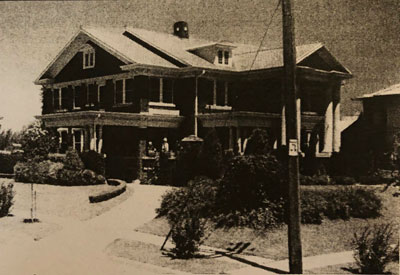
In last week’s Herald Banner, it was announced that the Hunt Regional Hospital will soon add on to the county’s lone hospital. The late Otha C. Spencer collected news from around Commerce and published it under the title Cow Hill “Bits & Pieces”. Comparing today’s medical facilities with the early ones in our county is fascinating.
The first doctor in Commerce was Dr. W. B. DeJernett, who arrived on the Black Lands directly from Bellevue Hospital Medical College, N.Y. in 1884. He made calls in bad weather on horseback and, in good weather, drove his two-wheeled gig. He and his wife raised ten children and lived on what is now the Chapin House on Monroe Street in 1998.
Dr. DeJernett was an active civil leader, banker, and businessman, member of the first city council, and Commerce’s first fire chief. He organized the First National Bank and served as president. He became a charter member of the Rotary Club in 1921.
Dr. DeJernett was active in bringing Mayo’s East Texas Normal College and the St. Louis and Southern railroad and maintenance shops to Commerce. He served as city secretary, public school trustee, drafted the first city ordinances, was president of the Hunt County Medical Association and the Southwest Surgeon’s Association. He was a surgeon in World War I and organized the Bruce B. Williams American Legion Post #1 of Texas.
Another well-loved early physician was Dr. Clarence Allen who for 27 years was the East Texas State Teachers College physician and for 40 years was physician for the Cotton Belt and Southern Pacific railroads.
Dr. Allen’s medical humor was a Commerce legend. One day he announced to patients in the waiting room, “Mr. So and So, we are ready for your surgery. Dr. Overstreet (veterinarian) is here. W. Y. Goff (funeral director) is on his way and Cujoe Bickham (florist) is bringing flowers.” The patient lived. The infirmary of Texas A&M University Commerce is named the Clarence Allen Health Center.
The practice of Dr. Newell T. King was significant to Commerce. He came in 1939 and practiced for 39 years. For 25 years, he was on the sidelines of the Commerce high football team and attended every game, home and away. In 1948, Dr. King supplied the football team with facemasks he had designed and had made by a dentist in Dallas. The Tigers were the first team nationally to have all players wearing face protection.
The longest resident practice in Commerce was by Dr. Louis W. Seyler, who opened his hospital at 1606 Bonham Street in 1948 and, for over 40 years “raised almost every kid in the post-war generation. Whether you got a shot, had a cut finger sutured, a nasty cough, bad cold, etc., his fee was $5.00.
Dr. Seyler spent many hours reading medical journals. He would often call a patient he had seen weeks before. “I found a new medication. Go to “Abie” Cranford’s (pharmacy) and pick it up.” Doctoring was an art, a science and an obligation.
